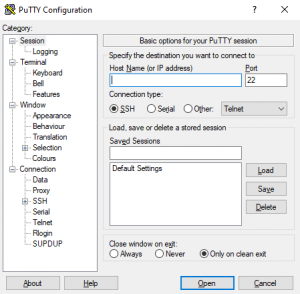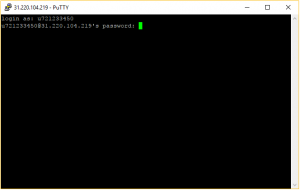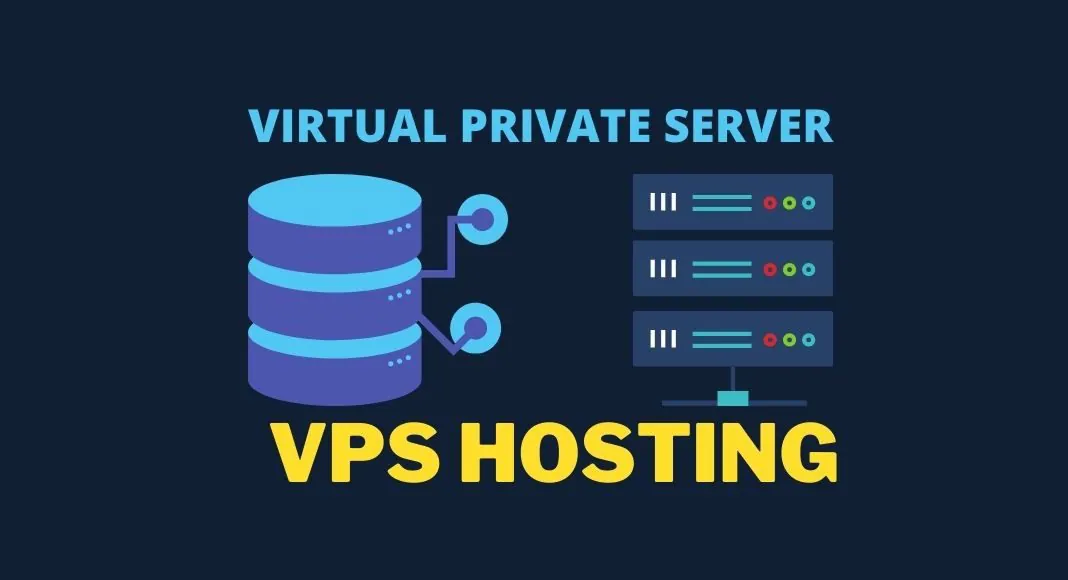When should one consider VPS hosting?
Every website needs web hosting to store its files and make them available to the public. Many types of web hosting are available, with shared and virtual private server (VPS) hosting services is the most popular.
Therefore, it can be difficult to decide the best option for your site. In this article, we will talk about when you should use VPS hosting. We’ll also talk about the three essential steps to hosting a website on a VPS:
1. Choose the right VPS hosting plan.
2. Learn how to connect to a VPS using Secure Shell (SSH).
3. Use the command line to manage your VPS.
The Difference between shared hosting and VPS
Shared hosting and VPS share a basic similarity – both use a physical server to host multiple websites. This is the most cost-effective approach, resulting in lower prices than dedicated hosting or cloud hosting services. However, the similarities end there.
A web server has limited system resources such as RAM, CPU power, and disk space. In a shared hosting environment, multiple clients use the resources of a physical server, which can create a bottleneck and slow down your site in two situations:
- When the hosting provider runs many websites on the same server space.
- A website receives a lot of traffic on the server and takes up more resources.
The first situation should not be a problem if you choose a reputable web hosting provider. You can’t avoid it in the latter case, especially if it happens to another site.
This is where VPS hosting may help. Unlike shared hosting, web hosting divides server resources for each Virtual Private server hosting customer. In other words, these containers act like individual servers.
Another key difference between shared hosting and Virtual Private server lies in the level of control.
The host configures the web server for its clients in a shared hosting environment. Therefore, users do not have access to the web server settings. Instead, they get a user-friendly control panel with features like an automatic WordPress installer, file manager, and backup.
While these features are useful for beginners or website owners who don’t want to deal with server maintenance, they fall short when compared to the level of control that VPS hosting offers.
A VPS comes with server root access, so it is possible to install custom web applications and a preferred operating system such as Ubuntu or CentOS.
Shared hosting is slightly cheaper than VPS hosting and more user-friendly because the host configures the servers. However, it provides more limited resources and may compromise site performance.
Therefore, this type of web hosting is more suitable for static or small sites that use content management systems (CMS) such as WordPress and Joomla.
On the other hand, VPS hosting requires more technical experience as most options are self-managed. However, VPS hosting is the best solution for web applications that require more licenses or custom server configuration.
When should you switch from shared hosting to VPS?
Shared web hosting may become less suitable as your site grows and receives more traffic or requires better security measures, requiring more server resources.
However, how long VPS hosting will require depends on your website’s performance and your current shared hosting plan. For example, if you use our commercial shared hosting, which can handle thousands of visitors per month, it may take time before you experience performance issues.
Since no two providers offer the same experience, it cannot be easy to know when to upgrade to Virtual Private server hosting. Here are a few signs you should consider moving to a VPS:
- This site receives at least 100-200 hits per day.
- There is a steady increase in site bounce rates.
- The website slows down or starts experiencing crashes.
It’s also worth noting that other factors can affect your site’s performance in addition to the hosting plan you use.
It’s also worth noting that other factors can affect your site’s performance in addition to the hosting plan you use, which is why we recommend you actively optimize your site. However, if the website starts getting more traffic and still feels slow after you’ve tried various ways to optimize it, it may be time to upgrade to VPS hosting.
Another factor to consider when deciding to switch to VPS hosting is your budget. Fortunately, it’s easy enough to find affordable VPS hosting plans.
It’s also worth noting that other factors can affect your site’s performance in addition to the hosting plan you use. Finally, you need to consider the needs of your website. Security and full control over the server is the main benefits of VPS hosting, but depending on the website you run, they may not be top priorities.
However, if you run an e-commerce site that processes transactions and customer data, the added security of VPS hosting is essential. Even if you collect this information for email marketing purposes, VPS hosting helps keep visitor data secure.
In addition, determine whether you will enjoy full control over the server. Generally, installing custom web applications or configuring server software requires root access.
Without it, you will need permission and assistance from your web hosting provider to complete the installation. It takes longer, and the host may not always support or allow such changes.
How to get started with VPS (in just three steps)
If you have decided to go for VPS hosting, the first step is choosing the right hosting plan. Since the process of setting up a website using VPS hosting is different from doing so on shared hosting, we will guide you every step of the way.
1. Choose the right type of VPS
When looking into VPS hosting, you’ll find that each VPS offers different options.
Generally, we recommend a VPS plan with at least 2GB of RAM and a dual-core CPU, especially if you’re running a high-traffic website, such as an e-commerce store.
If you’re hosting a simple WordPress site with moderate traffic, but want to handle the server administration yourself, a more basic VPS plan is usually a good option.
2. Learn how to connect to a VPS using SSH
Managing VPS is completely different from using shared hosting. The second configuration involves using a control panel.
On the other hand, VPS hosting usually doesn’t come with a control panel, so users interact directly with the server. You’ll need to use the command line, which we’ll get to in a moment.
First, connect to your server using a Secure Shell (SSH) client.
An SSH client is a program that allows you to connect directly to a server. If your computer runs a Unix-based operating system, you can do this directly from the command line without needing a dedicated client. If this is the case, you can proceed to the next step.
However, software such as PuTTY will be essential for those using Windows. It is free and easy to download and install on your computer. After installing PuTTY, run the client, and you will see a window like the below:

To connect PuTTY to the server, you need to know the IP address, SSH port, SSH username, and SSH password.
All this information should be available in the web hosting control panel. If using our VPS hosting service, access the server by logging into your Hostinger account. Find your VPS hosting account and click Manage.
If you don’t know your SSH password, go to Root Password to create a new password.
Enter the details in the PuTTY configuration and press the Open button to establish the connection. If the address is correct, a command prompt window will appear asking for your login information:

Use the root account and password found in your web hosting VPS panel with a new server. After successfully logging in to the server, start running commands to manage it.
3. Use the command line to manage your VPS
he does not give. Every server administration task uses text commands, so you should at least learn some basic commands.
There are plenty of resources and lists of essential commands to guide you through basic server administration tasks. Here are some examples:
- Mv – move files from one folder to another with this command.
- Cd – Use this command to navigate between directories.
- mkdir – This command is used when you need to create a new folder.
- nano – Modify files with the nano editor without leaving the command line.
At this point, you are ready to start managing the web server. Remember that the account has full privileges and access, which means you might accidentally change things you shouldn’t.
Conclusion
If you want full control over the server at a lower price than dedicated hosting, VPS hosting is the best option. It allows you to configure the server settings and install your own operating system and web applications.
With dedicated server resources, your website’s performance is not compromised by other sites on the same machine.
However, hosting a website on VPS requires more technical expertise compared to shared hosting. You need an SSH client such as PuTTY or the command line to manage the server. We hope this article helps you decide whether you should use VPS hosting or not. If you have more questions about VPS website hosting, leave a comment below or contact our support team at Ded9.com.











